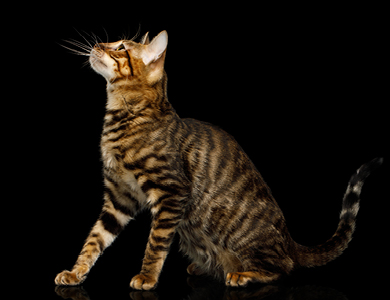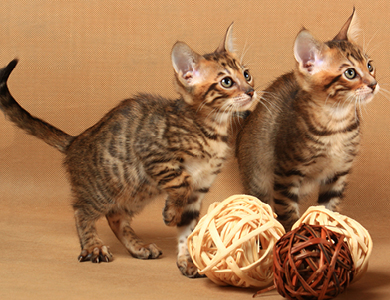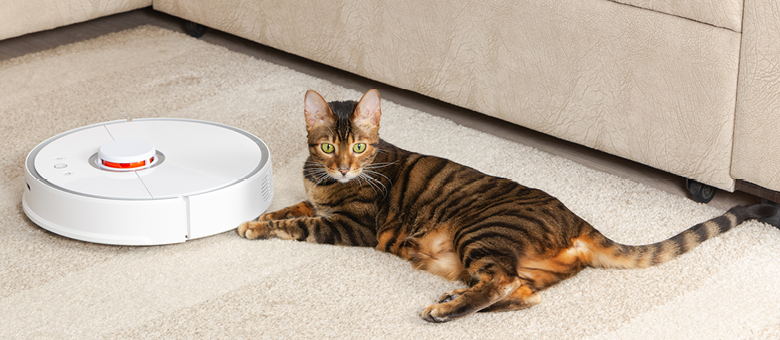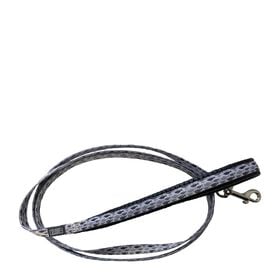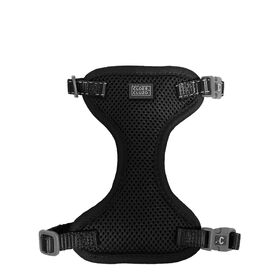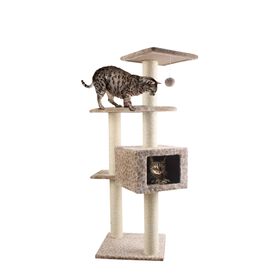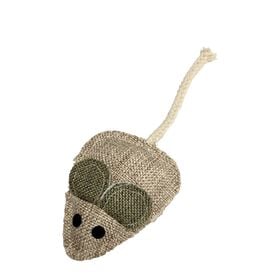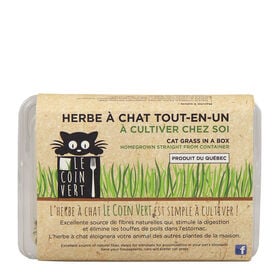Cats are affectionately referred to as living room tigers. Although domestic cats and tigers share a cat-like attitude, the resemblance usually ends there. The toyger, however, is the exception. The name “toyger” is a combination of the words “toy” and “tiger,” and the breed is aptly named, since it strongly resembles a miniature tiger, but is the size and has the temperament of a domestic cat.
Appearance
Although the toyger has a muscular build and sturdy bone structure, it does not weigh more than a cat of average size. The long rectangular body has the low slung look of a tiger and rather high shoulders, giving the toyger the shape and rolling gate of its wild counterpart. It has a broad head and, ideally, its ears are small and rounded. Its circular eyes, preferably small, are slightly sunken, which contrasts with the long, wide nose. The tail is long and thick, with a rounded tip, and carried low, giving the toyger a definite small wild cat silhouette.
The toyger’s unique characteristic is undoubtedly its coat colour. To evoke the tiger’s coat colour, only the brown mackerel tabby is accepted. However, instead of the black vertical stripes of the traditional mackerel tabby, this breed has randomly patterned broken or branched vertical stripes, with some of the stripes resembling rosettes that have been vertically stretched. The black stripes contrast sharply with the coat colour: a bold orange/tan on the back and almost white on the belly and the inside of the legs. The head has stripes distributed in circles so that it resembles the tiger as closely as possible (the markings do not form an “M” pattern on the forehead, like the classic tabby).
Origins
The toyger is the creation of American Judy Sugden, none other than the daughter of the famous breeder who was behind the Bengal. In the 1980s, Sugden began to develop a breed of cat whose coat and appearance most closely resembled that of a tiger, but whose size was more practical. Lastly, she wanted these cats to have a good-natured temperament. She selected breeders according to her image of the perfect tiger. In 1993, breeders Anthony Hutcherson and Alice McKee joined Sugden in her breeding project and, that year, TICA accepted the toyger for registration. Toygers were accepted as a full championship breed only in 2007, when TICA allowed them to compete. In 2016, the breed was recognized by the LOOF (Official Book of Feline Origins) in France. The breed is still relatively new in Canada, and is not yet recognized by the Canadian Cat Association.
Maintenance
Given the breed’s short hair, a weekly brushing will suffice. General care to keep their teeth in good health and their claws short, as well as an appropriate amount of exercise to keep their weight stable, are also recommended.
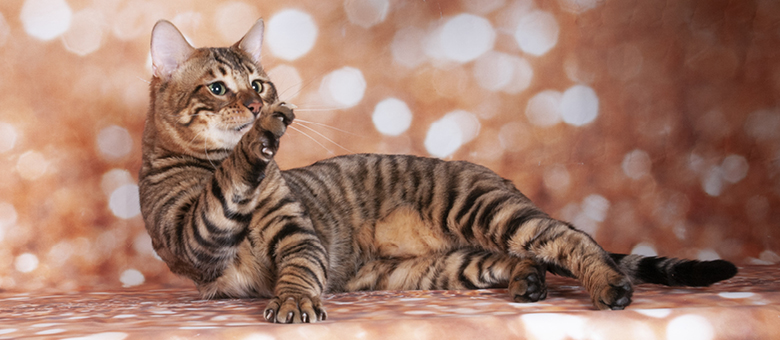
The ideal family
In terms of temperament, toygers are generally gentle and affectionate, but also active and very intelligent. They adapt easily, and enjoy training and walks on a leash, and especially the company of humans. However, as with all cat breeds, there are all types of toyger personalities. It is preferable to choose a cat whose personality best suits your lifestyle.
Unusual facts
— Unlike Bengal and Savannah cats, toygers are not a hybrid breed, since they are not the result of crossbreeding between wild and domestic cats. They are truly domestic cats.
— Every toyger has its own unique stripe pattern, much like a fingerprint.
— Since the breed is still very young, breeders are still working on making it look more and more like a toy tiger.


